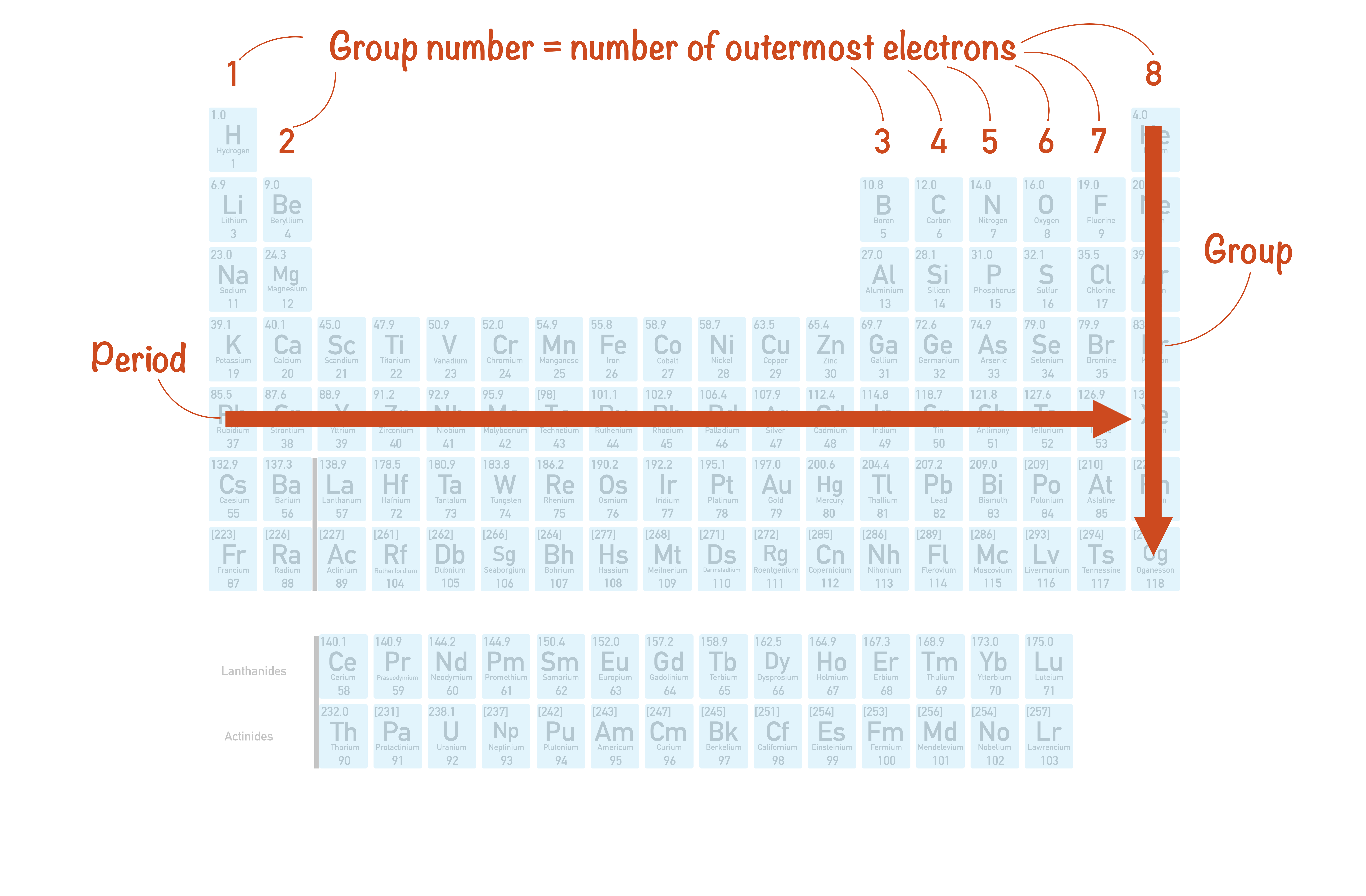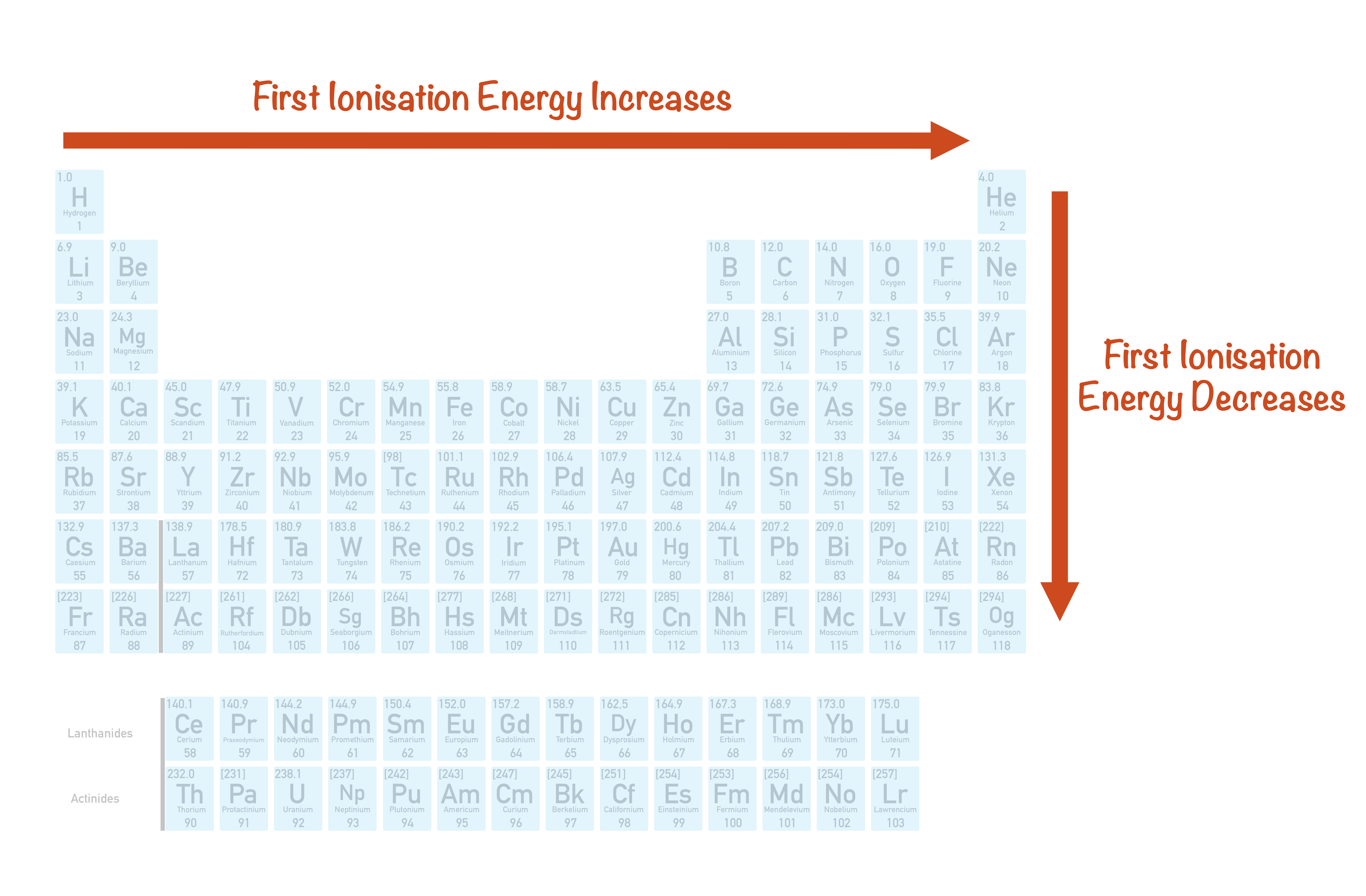Quick Notes - AS Inorganic Chemistry
Redox
Redox
- Most atoms can become more stable by losing or gaining electrons, forming charged ions.
- If an atom loses electrons it is oxidised.
- If an atom gains electrons it is reduced.
- Reducing agents get oxidised themselves, causing another species to be reduced.
- Oxidising agents get reduced themselves, causing another species to be oxidised.
- Half-equations show how one species is being oxidised or reduced in a redox reaction.
The Periodic Table and Periodictiy
The Periodic Table
- The periodic table is an arrangement of elements in rows and columns, based on their atomic numbers.
- Each column is called a group.
- Groups show the number of electrons in the outer shell of an element.
- Each row is called a period.
- All elements in one period have same number of electron shells.

- The s, p and d blocks refer to the type of electron orbital that the outermost electrons are in for an element.
Atomic Radius
- Atomic radius decreases across a period in the periodic table.
- Atomic radius increases down a group in the periodic table.
- Electrons in inner shells shield the positive charge of the nucleus from electrons in outer shells; this is called inner electron shielding.
- The greater the degree of electron shielding, the less tightly outer electrons are attracted to and ‘pulled into’ the nucleus, so the larger the atomic radius.
- Across a period, the number of protons in the nucleus of an element increases, but the level of shielding stays the same; this means outer electrons get pulled into the nucleus more and the atomic radius decreases.
First Ionisation Energy
- The first ionisation energy of an element is the energy required to remove one mole’s worth of electrons from one mole's worth of its gaseous atoms.
- As a trend, first ionisation energy increases across a period in the periodic table.
- As a trend, first ionisation energy decreases down a group in the periodic table.

- Elements in groups 3 and 6 of the same period do not follow the general trend for first ionisation energy.
- It’s easier to remove an electron from group 3 elements compared to group 2 elements because the electron is being removed from an orbital that is further from the nucleus (p orbital instead of s orbital), meaning the electron is less tightly held by the atom.
- It’s easier to remove an electron from group 6 elements compared to group 5 elements because the electron being removed experiences a higher level of electron-repulsion from other p-orbital electrons.
Melting and Boiling Point Trends
- The melting points and boiling points of a substance are linked to its structure type and how much energy is required to break it apart its structure.
- Simple molecular structures are held together by weak intermolecular forces that require low amounts of energy to break – they have low melting and boiling points.
- Giant structures are held together by strong atomic bonding that requires high amounts of energy to break – they have high melting and boiling points.
- Across a period in the periodic table, melting points of elements increase from groups 1 to 4 (giant structures), then decrease from groups 5 to 8 (simple molecular substances).
Group 2 Metals
Group 2 Metals
- Metals in group 2 of the periodic table are called the alkaline earth metals.
- Down group 2, atomic radius increases.
- Down group 2, first ionisation energy decreases.
- As a trend, melting point decreases down the group (magnesium is an exception).
Group 2 Metal Reactions
- Reactivity of the group 2 metals increases going down the group.
- Outer electrons are held less tightly due to increased inner electron shielding, so they are easier to lose, making the metals more reactive.
- Group 2 metals usually form metal hydroxides when they react with water.
- Beryllium is not reactive enough to form a hydroxide.
- Magnesium does react with water but only slowly.
- The solubility of group 2 metal hydroxides increases down the group.
- The pH of the metal hydroxide solutions increases down the group.
- The solutions become more alkaline as more hydroxide ions are released into the solutions (as the solubility of the group 2 metal hydroxide increases).
- The solubility of group 2 metal sulfates decreases down the group, with barium sulfate being completely insoluble.
Group 7 Halogens
The Halogens and Electronegativity
- Halogens are elements found in group 7 of the periodic table.
- Electronegativity is the tendency of an atom to attract a shared pair of electrons in a covalent bond towards itself.
- The halogens are highly electronegative elements.
- Down group 7, electronegativity decreases.
- Fluorine is the most electronegative halogen and forms highly polar bonds when bonded to atoms with low electronegativities. Polarity of such bonds decreases down the group.
The Halogens and Boiling Points
- The melting and boiling points of the halogens increase going down group 7.
- Halogens exist in elemental form as simple, diatomic molecules that held together by weak intermolecular forces (temporary induced dipole-dipole).
- The larger the molecules, the larger the intermolecular forces that can arise between them, requiring more energy to overcome – giving the substance a high melting point.
- The size of the halogen molecules increase down the group, meaning their melting and boiling points also increase.
Oxidising Power of the Halogens
- Halogen atoms can gain one electron to have a full outer shell – they are reduced.
- For a halogen atom to gain an electron, another species must lose an electron (be oxidised).
- Halogens can act as oxidising agents as they can force other species to be oxidised.
- Oxidising agents are themselves reduced.
- The ability of halogens to act as oxidising agents decreases down the group.
- Fluorine is the strongest oxidising agent of the halogens.
- Halogens can oxidise less reactive halide ions in displacement reactions.
Reducing Power of the Halides
- Halide ions can give away an electron to become halogen atoms – they can be oxidised.
- For a halide ion to lose an electron, another species must gain an electron (be reduced).
- Halide ions can act as reducing agents, as they can force other species to be reduced.
- Reducing agents are oxidised!
- The ability of halide ions to act as reducing agents increases down the group.
- The reactions of halide ion salts with concentrated sulfuric acid show the different strengths of the halide ions as reducing agents.
- Chloride ions do not reduce the sulfur in sulfuric acid.
- Bromide ions can reduce the sulfur from 6+ to 4+ oxidation state.
- Iodide ions can reduce the sulfur from 6+ to 4+ to 2- oxidation state.
Halide Ion Tests
- Silver nitrate (AgNO3) can be used to identify halide ions in a solution.
- Silver ions combine with halide ions to produce silver halide precipitates with different colours.
- Fluoride ions do not produce a precipitate.
- Chloride ions produce a white precipitate (AgCl(s))
- Bromide ions produce a cream precipitate (AgBr(s))
- Iodide ions produce a yellow precipitate (AgI(s))
- Dilute nitric acid is added before silver nitrate to remove impurities that may also form precipitates with the silver ions.
- The precipitates have different solubilities in ammonia (NH3), which can be used to help further identify the halides.
- AgCl(s) dissolves in dilute ammonia.
- AgBr(s) dissolves in concentrated ammonia only.
- AgI(s) does not dissolve in concentrated ammonia.
